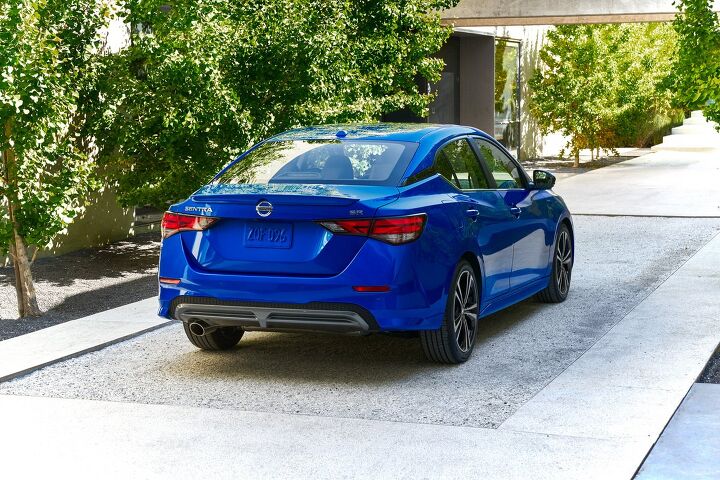U.S. to Play Beefier Role in Nissan's Future; Company Shakes Up North American Leadership

A struggling Nissan sees the U.S. market playing a bigger role in the company’s sales future. Ahead of the release of its near-term recovery plan, expected later this month, the automaker sees new product as the key to firming up its flagging U.S. presence.
Elsewhere, a report out Friday claims Nissan’s new plan will see the U.S. account for a third of the automaker’s global volume. With all of this in the works, it’s perhaps no surprise that the company’s North American arm saw a sudden resignation.
Speaking to Reuters, sources with knowledge of the plan say the U.S. and China will each account of a third of the company’s volume (U.S. share rises from 25 percent today), with everywhere else — Europe, other Asian markets, Russia, and Latin America — seeing their share fall from 45 percent today to a third.
Word of this plan leaked earlier this year, as Nissan attempted to forge a path out of a global sales retraction and profit loss made all the more worse by the arrival of COVID-19. The company’s workforce and R&D spending will see a haircut, production volume will be cut going forward, and both Nissan and alliance partner Renault will focus on their strengths. Models that work in some markets will continue to be sold there, minus unnecessary, slower-selling stablemates.
In an interview with Automotive News, Nissan’s chief operating officer, Ashwani Gupta, called the U.S. a “great market” where the company will focus on three strategies: product, dealers, and “brand power.” The first of the three efforts is well underway, as seen by revamped models like the Altima, Versa, and Sentra. (The Rogue is next, followed by the Frontier and Armada.)
Greater standard content and fewer build configurations is now the name of the game, with focus placed on fewer fleet sales.
Gupta promised eight new products over the next 28 months, a move he says will reduce the average model age in Nissan’s lineup to 3.3 to 3.5 years. Despite overall sales figures deep-sixed by the coronavirus lockdown, Gupta added that Sentra’s retail share increased in April compared to the previous year.
“This product strategy, which is focused on new products with advanced technology, will bring the momentum in the U.S. market,” Gupta said. The COO then went out of his way to celebrate the brand’s dealer network, calling them “the face of our customer.” If you’ll recall, American dealers gave the company’s newly minted CEO an earful over the winter.
“If the product and dealers are great, they need to be connected by a transparent and sustainable business mechanism,” Gupta said. “In mid-February, we launched the Nissan Drive 2020 dealer support plan — a very comprehensive package designed to support the dealer.”
As for brand recognition, Nissan is well-known as a purveyor of value products — which doesn’t necessarily mean cheap. However, Nissan wants more brand power, preferring to be known as much for quality and accolades as its affordability. That power will come from new product, Gupta claims.
On Friday, Nissan announced the resignation of its North American president and chairman, José Luis Valls. His departure date is June 15th. Into the vice chairman role steps Jérémie Papin (seen above, on the left), who joined Nissan North America as its administration and finance chief in 2018 after serving as global finance director of the broader Renault-Nissan-Mitsubishi alliance.
Working beneath Papin will be Mike Colleran (same photo, on the right), current Nissan corporate vice president and global chairman of the Infiniti division. Colleran was appointed senior vice president for Nissan U.S. effective June 1st.
[Images: Nissan]

More by Steph Willems
Latest Car Reviews
Read moreLatest Product Reviews
Read moreRecent Comments
- 3-On-The-Tree Lou_BCone of many cars I sold when I got commissioned into the army. 1964 Dodge D100 with slant six and 3 on the tree, 1973 Plymouth Duster with slant six, 1974 dodge dart custom with a 318. 1990 Bronco 5.0 which was our snowboard rig for Wa state and Whistler/Blackcomb BC. Now :my trail rigs are a 1985 Toyota FJ60 Land cruiser and 86 Suzuki Samurai.
- RHD They are going to crash and burn like Country Garden and Evergrande (the Chinese property behemoths) if they don't fix their problems post-haste.
- Golden2husky The biggest hurdle for us would be the lack of a good charging network for road tripping as we are at the point in our lives that we will be traveling quite a bit. I'd rather pay more for longer range so the cheaper models would probably not make the cut. Improve the charging infrastructure and I'm certainly going to give one a try. This is more important that a lowish entry price IMHO.
- Add Lightness I have nothing against paying more to get quality (think Toyota vs Chryco) but hate all the silly, non-mandated 'stuff' that automakers load onto cars based on what non-gearhead focus groups tell them they need to have in a car. I blame focus groups for automatic everything and double drivetrains (AWD) that really never gets used 98% of the time. The other 2% of the time, one goes looking for a place to need it to rationanalize the purchase.
- Ger65691276 I would never buy an electric car never in my lifetime I will gas is my way of going electric is not green email




































Comments
Join the conversation
Agree, many buyers don't even know how many cylinders are under the hood either. Nissan's problems are much greater than what type of structure their vehicle has. Nissan's quality really took a nosedive with their partnership with Renault.
So there's more suckers in the US and China? I believe it.